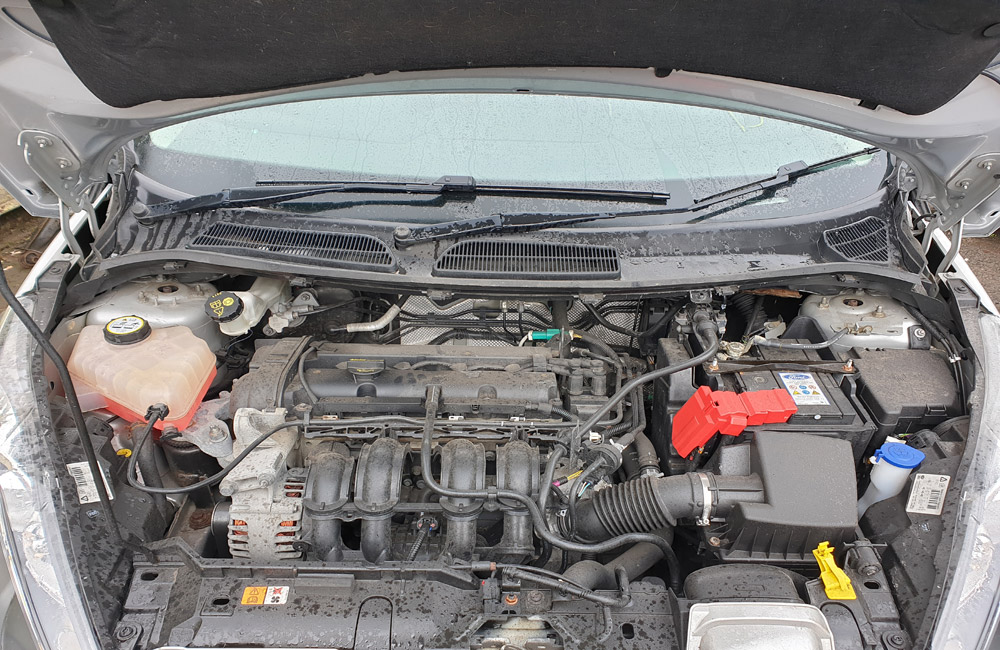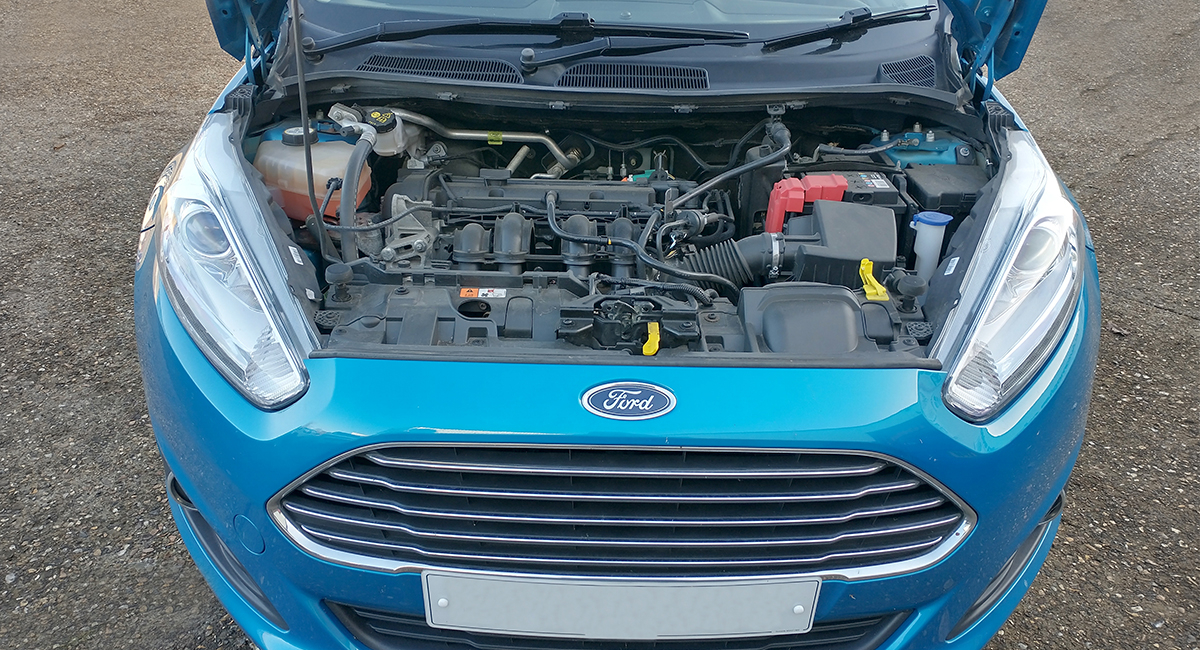Expert Tips for Optimizing Your Ford Fiesta Engine Efficiency
Expert Tips for Optimizing Your Ford Fiesta Engine Efficiency
Blog Article
The Future of Engines: Developments Driving Sustainable Power Solutions
As the vehicle sector browses the vital transition in the direction of sustainability, the future of engines is increasingly specified by groundbreaking advancements. Electric engine developments, along with appealing growths in hydrogen gas cells and biofuels, are reshaping the landscape of power solutions. The appearance of hybrid systems additionally complicates this advancement, presenting both difficulties and possibilities to minimize emissions successfully. Paired with the integration of synthetic knowledge in engine design, these technological strides increase essential questions regarding their lasting viability and influence on standard paradigms. What might this suggest for the industry and consumers alike?
Electric Engine Developments
The development of electric engine growths represents a critical shift in the automobile and aerospace industries, driven by the urgent requirement for sustainable alternatives to nonrenewable fuel sources. This transition is characterized by substantial innovations in battery modern technology, power electronic devices, and electrical motor design, which jointly enhance the performance and efficiency of electric engines.
Recent technologies have resulted in the development of lighter, much more energy-dense batteries, such as lithium-silicon and solid-state batteries, which assure longer arrays and much shorter charging times. Additionally, renovations in electrical motor performance, such as the usage of irreversible magnets and progressed cooling systems, enable electric engines to run successfully under varying conditions. These enhancements not just boost automobile performance but also add to a decrease in overall power usage.
Additionally, the combination of sophisticated software program algorithms has optimized power management in electrical automobiles, enabling for regenerative braking and anticipating charging approaches. As producers progressively welcome electric propulsion, the aerospace and automobile industries are witnessing a paradigm change in the direction of greener modern technologies. This development not just meets governing demands but additionally aligns with customer choices for eco friendly transport solutions, strengthening electric engines as a cornerstone of future lasting flexibility.
Improvements in Biofuels
As the automotive and aerospace markets significantly focus on lasting energy resources, innovations in biofuels become a complementary remedy to electric engines. Biofuels, derived from organic products such as crops, waste, and algae, offer an innovative opportunity for minimizing greenhouse gas emissions and dependence on nonrenewable fuel sources.
Recent research has concentrated on enhancing the effectiveness and sustainability of biofuel manufacturing. Second-generation biofuels make use of non-food feedstocks, minimizing competition with food supply and minimizing ecological influence. Furthermore, developments in artificial biology have allowed the engineering of bacteria to create biofuels better, leading to higher yields and reduced manufacturing costs.
In addition, the growth of drop-in biofuels permits smooth integration into existing framework, enabling a smoother change for sectors typically dependent on nonrenewable fuel sources. ford fiesta engine. These gas can be used in existing engines without adjustments, facilitating their fostering throughout different industries
Investments in biofuel technology, along with helpful policies, are vital to drive development and scalability. As the worldwide area looks for to deal with climate change, biofuels supply a practical, immediate service that straightens with the overarching goal of sustainability in transport and aeronautics.
Hydrogen Gas Cell Technology
An expanding number of scientists and business are exploring hydrogen gas cell technology as a viable choice to traditional source of power in transport and power systems. This innovation converts chemical power from hydrogen into electrical power with an electrochemical reaction, with water as the only result, making it an eco-friendly option.
The core of hydrogen gas cells is the fuel cell stack, where hydrogen particles are split into protons and electrons. The circulation of electrons generates power, click reference while protons move through a membrane layer to integrate with oxygen from the air, developing water. This procedure leads to try this high efficiency and reduced exhausts, positioning hydrogen fuel cells as an essential player in the transition to lasting power.
Substantial innovations have actually been made in enhancing the toughness and efficiency of fuel cells, along with minimizing prices through innovative production strategies. Furthermore, the growth of hydrogen manufacturing approaches, such as electrolysis powered by renewable resource sources, improves the sustainability of the overall system. As infrastructure for hydrogen refueling expands and production techniques end up being a lot more effective, hydrogen gas cell modern technology holds fantastic pledge for decarbonizing numerous fields, consisting of sturdy transport and stationary power generation.
Hybrid Systems and Their Effect
Crossbreed systems stand for a substantial advancement in lasting engine technology, merging traditional inner burning engines with electrical propulsion to maximize energy efficiency and reduce emissions (ford fiesta engine). This dual method allows vehicles to utilize both source of power, enabling higher versatility in energy intake and reducing reliance on nonrenewable fuel sources

In addition to ecological advantages, crossbreed systems offer consumers a viable change towards totally electric automobiles. They reduce array anxiety by incorporating the benefit of gas with the benefits of electrical propulsion, making them an appealing option for a larger target market.
The Role of AI in Engine Layout
Leveraging advanced algorithms and artificial intelligence methods, the automotive market is significantly integrating expert system (AI) into engine layout processes. AI improves the effectiveness and performance of design by evaluating huge datasets to recognize optimal setups and performance parameters. This capacity permits designers to simulate various operating conditions and anticipate engine habits under multiple situations, substantially lowering the time and expense related to traditional prototyping approaches.
Furthermore, AI helps with the development of sophisticated materials and burning procedures tailored for sustainability. By enhancing fuel effectiveness and decreasing exhausts, AI-driven layouts straighten with international campaigns targeted at minimizing the carbon footprint of automobile engines. Maker discovering formulas can additionally forecast maintenance requirements, resulting in improved reliability and longevity of engine parts.
In Addition, AI is instrumental in the assimilation of electrification modern technologies, such as crossbreed systems, where it can enhance battery management and energy recuperation click this processes. As the industry relocates in the direction of more lasting power remedies, the role of AI in engine style becomes significantly essential, driving technology and improving the performance of future engines. Inevitably, the partnership between AI and engine layout declares a new period of smarter, cleaner, and extra effective automobile modern technologies.

Final Thought
In verdict, the future of engines is being formed by a convergence of ingenious modern technologies that focus on sustainability. Electric engine advancements, biofuel developments, hydrogen fuel cells, and crossbreed systems collectively add to a considerable reduction in discharges and ecological impact. In addition, the assimilation of fabricated knowledge in engine layout boosts performance and efficiency. These transformative remedies emphasize a dedication to producing a cleaner, a lot more lasting automotive landscape, eventually profiting both society and the environment.
Electric engine improvements, together with appealing developments in hydrogen fuel cells and biofuels, are reshaping the landscape of power solutions. In addition, improvements in electric motor performance, such as the use of permanent magnets and progressed cooling systems, enable electric engines to operate effectively under differing problems. By optimizing gas performance and reducing emissions, AI-driven designs line up with worldwide campaigns intended at lowering the carbon footprint of automotive engines. As the sector moves in the direction of even more lasting power options, the role of AI in engine layout ends up being significantly crucial, driving technology and improving the performance of future engines. Electric engine innovations, biofuel advancements, hydrogen gas cells, and hybrid systems collectively contribute to a substantial reduction in exhausts and environmental influence.
Report this page